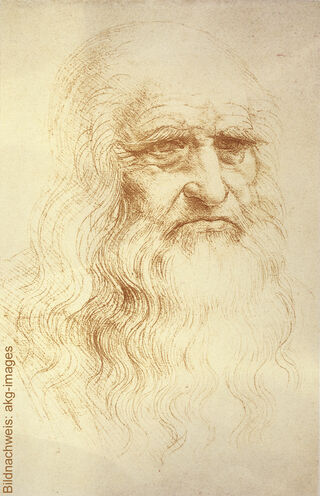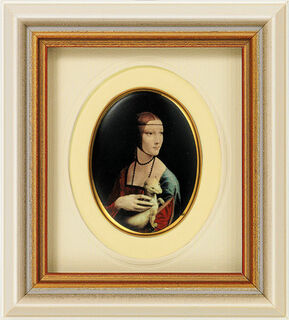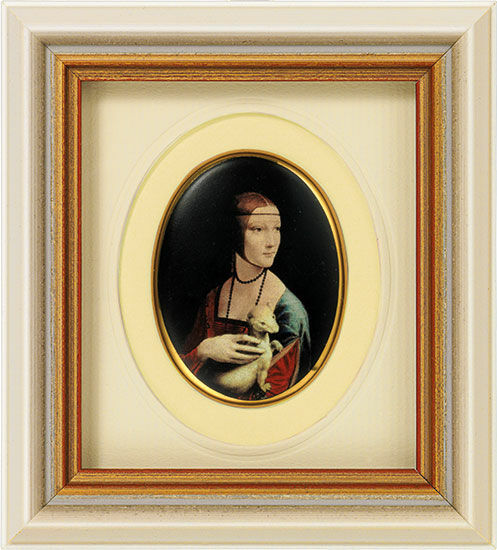Miniature porcelain picture "Lady with an Ermine" (1488-90), framed


Miniature porcelain picture "Lady with an Ermine" (1488-90), framed
Quick info
miniature picture on porcelain | handmade | passe-partout | solid wood frame | size 9.7 x 10.8 cm
Detailed description
Miniature porcelain picture "Lady with an Ermine" (1488-90), framed
For centuries, miniature pictures made of fine porcelain were produced mostly for aristocratic collectors. This miniature painting bears a museum masterpiece that is transferred by hand onto genuine Thuringian porcelain, fired twice and mounted on a pastel-coloured passe-partout. Afterwards, the shiny gold edge is applied by hand with a metal leaf. The valuable overall picture is rounded off by a solid wood frame that has been primed and sanded several times. Size 9.7 x 10.8 cm. Original: Oil on walnut wood, Muzeum Narodowe, Krakow.
This object is part of the following sets
Customer reviews
Schnelle Lieferung.

About Leonardo da Vinci
1452-1519
Leonardo da Vinci is considered the greatest universal genius in the history of art and science. His inventions, works of art and studies, but not forgetting his mysterious life, continue to interest science and literature to this day.
The universal genius Leonardo da Vinci, the epitome of the Renaissance man, was a painter, sculptor, builder, writer, art theorist, naturalist, inventor and technician all in one. Even though in primary school the illegitimate child had barely learned how to read, write and do arithmetic, thanks to his unique talent, he soon set himself up early for an apprenticeship as a painter and sculptor with Andrea del Verrocchio and tried to gain employment at one of the courts. Temporarily he succeeded in working for the Duke of Milan or Cesare Borgia, the Pope or the French King.
His life was filled with the study of humanities and the universal urge for knowledge and action that was characteristic of his epoch. Through incessantly observing, recording and analysing, he created a huge oeuvre as a scientist and technician alone. For example, he studied the geological formation and cloud formation, the flow of water and air, the flight of birds and apparatus in order to enable human flight.
His work as a visual artist, on the other hand, is smaller but occupies a very high rank, such as the "Last Supper" or the "Mona Lisa".
His artistic striving for compositions with moderately calm geometric basic forms prepared for the High Renaissance. His later approaches to grasping the world of appearance in its transformation through air and light even point ahead to Baroque painting.
Ceramic product made of kaolin, quartz and feldspar.
Porcelain is formed by turning or pressing and figurative objects are cast. Complex objects have to be cast in separated steps and sections and then "assembled". After the moulding, the pieces are dried and "annealed" at about 900 °C. Next, the glaze will be applied and fired at temperatures between 1,240 °C and 1,445 °C. In renowned manufactures, the porcelain is painted by hand whereby each colour has to be fired individually and in compliance with narrow temperature tolerances.
Porcelain was invented in China and became widespread in Europe from the 16th century onwards. The first European porcelain factory was founded in Meissen, Germany in 1710.
Other famous European porcelain factories include Fürstenberg, Höchst, Schwarzburger Werkstätten, Lladró, Nymphenburg, KPM, Augarten, Sèvres, Limoges, Royal Copenhagen, Worcester. Individual factories label their products with their personal porcelain stamps so that for the collecter it is easy to identify their origin.
(Rebirth). The term describing art from around 1350 until the 16th century.
A mindset that developed in Florence in the late 14th century that was retrospectively classified as rebirth of the classical ideals of Greek and Roman antiquity. During the 15th and 16th centuries, the Renaissance spread first over Italy and then all over Western Europe and determined the entire artistic creation. Brilliant artists such as Donatello, Leonardo da Vinci, Michelangelo, Raphael, Dürer, Holbein, Cranach and Fouquet created their immortal works by following the humanistic premises and placing the human being in the centre of all thinking.
Renaissance experienced its heyday in literature through dramatic works and poems of William Shakespeare.
At the end of the 16th century, the Renaissance had to give way to the opulence of baroque, before its ideas experienced a rebirth in the classicism of the 18th century.



